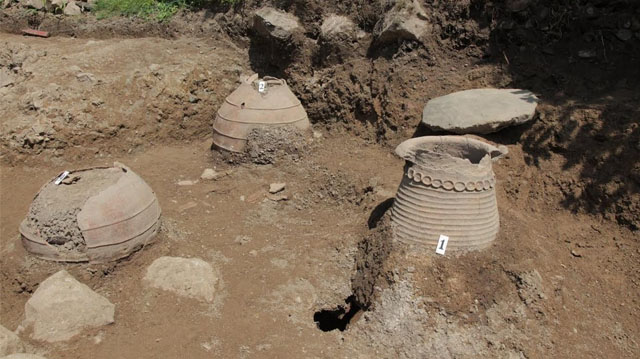ქართული ღვინო გინესის რეკორდების წიგნში
ინესის მსოფლიო რეკორდების ოფიციალურ ვებგვერდზე გამოქვეყნებულ ინფორმაციაში წერია, უძველესი ღვინო საქართველოშია აღმოჩენილი.„
ძვ.წ. 6000-5800 წლით დათარიღებული ღვინის ქიმიური მტკიცებულებები მიღებულია უძველესი თიხის ნარჩენებისგან, რომელიც საქართველოში გათხრების შედეგად გამოვლინდა. ნარჩენები ღვინის სახით განისაზღვრა, რადგან ის შეიცავს ღვინის მჟავას, რომელიც დიდი რაოდენობითაა მხოლოდ ახლო აღმოსავლეთში ევრაზიულ ყურძენში და მისგან დამზადებულ ღვინოში. სხვა ორგანული მჟავების (ვაშლის, ლიმონის და ქარვის მჟავები) გამოვლენა, რაც ასევე ევრაზიის ყურძენშია აღმოჩენილი, ადასტურებს ამ დასკვნას.
ღვინის ნარჩენები აღმოჩენილ იქნა დიდი ზომის თიხის ჭურჭელში, რომელსაც ღვინის ფერმენტაციისთვის და შესანახად იყენებდნენ. ამ აღმოჩენამდე ღვინის ყველაზე ძველი ნარჩენები, რომელიც ძვ.წ. 5400-5000 წლით თარიღდებოდა, ნაპოვნი იყო ირანში. ახალი აღმოჩენა ამტკიცებს, რომ მეღვინეობა უკვე 8 ათასი წლისაა.
არქეოლოგიური აღმოჩენის ავტორია პენსილვანიის უნივერსიტეტის ანთროპოლოგიისა და არქეოლოგიის მუზეუმის პროფესორი პატრიკ მაკგოვერნი და მეცნიერები საქართველოდან, საფრანგეთიდან, იტალიიდან, ისრაელიდან, კანადიდან, დანიიდან და ამერიკის შეერთებული შტატებიდან, რომლებიც მონაწილეობდნენ საქართველოს ღვინისა და ყურძნის შემსწავლელ კვლევაში.
Who WINE RESIDUES DATED 6000–5800 BC What 8,000 YEAR(S)
The wine residues were recovered from large-capacity jars, which were probably used for fermentation, ageing and storage. Prior to this discovery, the oldest chemically identified wine from Hajji Firuz Tepe (Iran) dated back to about 5400–5000 BC. These new findings are from about 600–1,000 years earlier, and indicate that wine-making and possibly viticulture were already in place about 8,000 years ago.
The discovery was made by Prof. Patrick McGovern, a molecular archaeologist from the University of Pennsylvania Museum of Archaeology and Anthropology and lead author of the study “Early Neolithic Wine of Georgia in the South Caucasus”, published online in the journal Proceedings of the National Academy of Sciences (PNAS) on 13 November 2017, and scientists from institutions in Georgia, France, Italy, Israel, Canada, Denmark and the USA, who participated in the joint “Research Project for the Study of Georgian Grapes and Wine Culture”.

